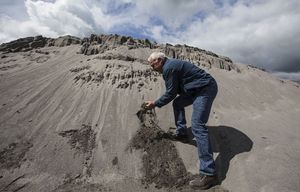With May 18th approaching fast, my locality once again remembers the 1980 eruption of Mt. St. Helens. This volcanic event had massive ramifications on global flight and climate due to the huge ash cloud. The eruption claimed less than 60 lives due to the efforts of the USGS resisting public urges to reopen the area for recreational activities as they were monitoring the warning signs. A bigger factor in the low death toll was the fact that the volcano erupted laterally, out the northern slope rather than straight upward. This directed the eruption towards miles of forest and wilderness rather than the Portland metro area, home to about 2 million people. But what if the eruption aimed south? In a worse timeline, the lateral eruption aimed directly at Portland, unleashing searing hot glassy ash at the major city and its surrounding suburban sattelite cities. Vancouver, WA, would be eviscerated.
What if Mt. St. Helens "blew the other way"?
- Thread starter Cascadia-97
- Start date
